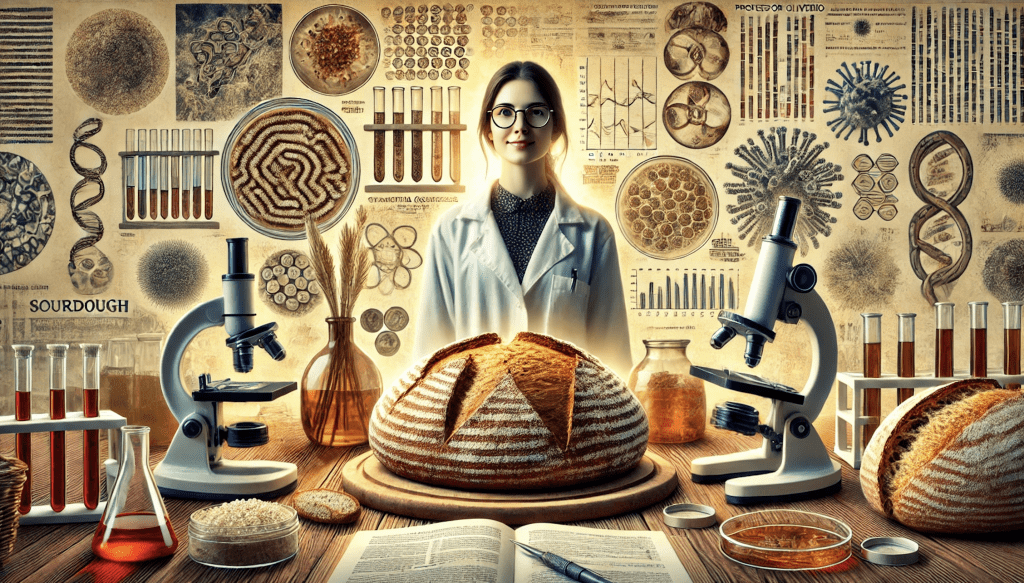The fascinating world of sourdough bread, with its distinctive tang and complex flavor, is a testament to the wonders of fermentation. Each loaf is the result of an intricate dance performed by a unique microbiome—a community of yeasts and bacteria that work together to transform simple ingredients into something extraordinary. The study of these microbial communities is not just about understanding how bread rises; it delves into the very mechanics of microbial interaction, a field that holds vast potential for advancements in both agriculture and medicine.
The Pioneering Work of Professor Angela Oliverio
At the forefront of this research is Angela Oliverio, an assistant professor of biology at Syracuse University who has recently been awarded a prestigious National Science Foundation (NSF) grant. Professor Oliverio’s work focuses on a relatively unexplored phenomenon known as community coalescence. This process occurs when different microbiomes come into contact and mix, leading to the formation of new microbial systems with potentially novel functions.
What is Community Coalescence?
Community coalescence is a term used to describe the interaction and merging of distinct microbial communities. These events can happen naturally, such as when two people shake hands and exchange microbes, or can be engineered, such as in agricultural practices where soil microbiomes are blended to enhance crop productivity. Despite its significance, our understanding of community coalescence is still in its infancy. As Professor Oliverio points out, there is a lack of theoretical frameworks to predict outcomes and a scarcity of model systems to study its effects scientifically.
Research Goals and Methods
Professor Oliverio’s research aims to fill this knowledge gap by investigating how microbiomes reassemble and what impacts these mixing events have on microbial function. Using synthetic microbiomes constructed in the lab, her team is poised to uncover the intricacies of community coalescence. The lab houses a remarkable library of 500 sourdough starter samples collected from around the world, providing a rich resource for experimentation. Additionally, a collaboration with Tufts University brings in a library of kombucha samples, further broadening the scope of study.
Genomic Tools and Techniques
Central to Oliverio’s research are advanced genomic tools that allow for detailed analysis of microbial communities. By culturing isolates from wild samples and creating synthetic communities, the team uses genomics and RNA tools to observe how transcription changes when different communities interact. These insights could lead to the development of predictive models and tools for microbiome engineering, with significant implications for medicine and industry.
The Broader Impact
Beyond the scientific community, Professor Oliverio hopes to leverage the public’s interest in fermented foods to foster a greater appreciation for microbiology. The universal appeal of sourdough starters serves as an engaging entry point for discussions about microbial science. By connecting with people’s curiosity about their own sourdough cultures, Oliverio aims to demystify the science and inspire a new generation of microbiologists.
Educational Initiatives
In line with this goal, Professor Oliverio is developing an undergraduate course in computational biology and genomics, centered around the study of sourdough starters. Students will have the opportunity to cultivate their own sourdough cultures, isolate and sequence the microbes, and learn to assemble and analyze genomes from their samples. This hands-on approach not only teaches essential scientific skills but also highlights the relevance of microbiology in everyday life.
Closing Thoughts
The research led by Professor Angela Oliverio is a groundbreaking endeavour that promises to deepen our understanding of microbial interactions and community coalescence. By exploring the dynamic world of sourdough starters and other fermented foods, her work not only advances scientific knowledge but also bridges the gap between academia and the public. This innovative approach not only enriches our appreciation of the microbial world but also opens new avenues for practical applications in various fields.
Thank you for reading The Sourdough People blog and exploring the fascinating intersection of microbiology and fermentation. Stay tuned for more insights and stories that celebrate the art and science of sourdough.
For more information, read here.





















